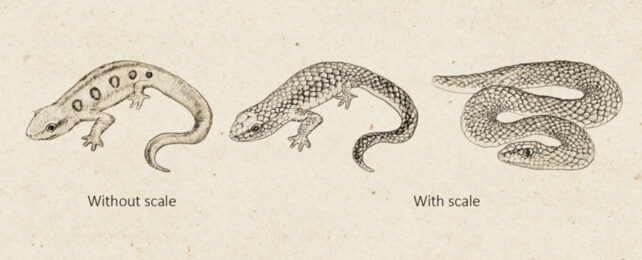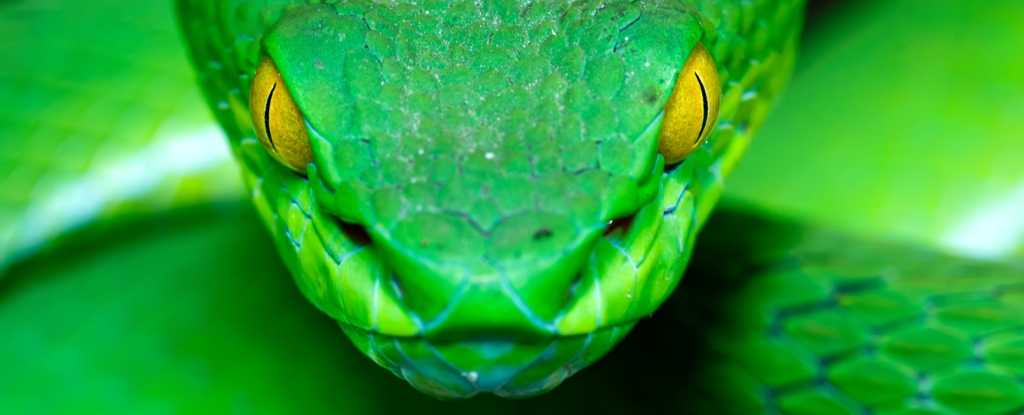Monkeys, like humans, have an in-built ability to spot snakes ultra-fast, and new research suggests scales are a key visual cue for primates when detecting these slithering threats.
Cognitive scientist Nobuyuki Kawai, from Nagoya University in Japan, ran experiments using three Japanese macaques (Macaca fuscata) that had never seen real-life reptiles or amphibians before, only pictures of snakes in a previous experiment. As expected, the animals innately responded faster to pictures of snakes compared to pictures of salamanders in a reward-based identification game.
However, when the images of salamanders were modified to show them wearing snakeskin, the monkeys responded just as quickly to these pictures as they did to pictures of snakes. The scaly skin seemed to be an important visual trigger.
“Previously we demonstrated that humans and primates can recognize snakes quickly; however, the critical visual feature was unknown,” says Kawai.
“The monkeys did not react faster to salamanders, a species that shares a similar elongated body and tail with snakes, until the images were changed to cover them with snakeskin.”
Previous research has shown that adults and even young children respond very quickly to the curved and limbless bodies of snakes compared to other kinds of visual stimuli.
Snakeskin could be another visual factor that primates latch on to when instinctively deciding if something is dangerous – backing up an earlier study showing monkeys have a negative reaction to snake skin.

“This may be because during evolution our primate ancestors evolved a visual system to identify scales, which are characteristic of snakes,” says Kawai. “These insights into primate evolution will likely improve our understanding of vision and brain evolution in animals, including ourselves.”
You might not be aware of it, but snakes are the biggest animal threat out there for humans today, responsible for some 94,000 deaths a year. Compare that to shark-related fatalities, which stood at 14 in 2023.
Being able to spot snakes remains crucially important for us as a species if we want to stay alive, which explains why infants as young as 7 months old show some kind of brain response to snakes, even if they’ve never seen the animals before.
We’ll need to see if the current study can be replicated in people, of course, but there’s good reason to think our brains are wired in the same way as our primate relatives. Snakeskin may be a red flag for danger.
“These results are consistent with the snake-detection theory that snakes were a strong selective pressure favoring modifications in the primate visual system that allow them to detect snakes more quickly or reliably,” writes Kawai in his published paper.
The research has been published in Scientific Reports.





